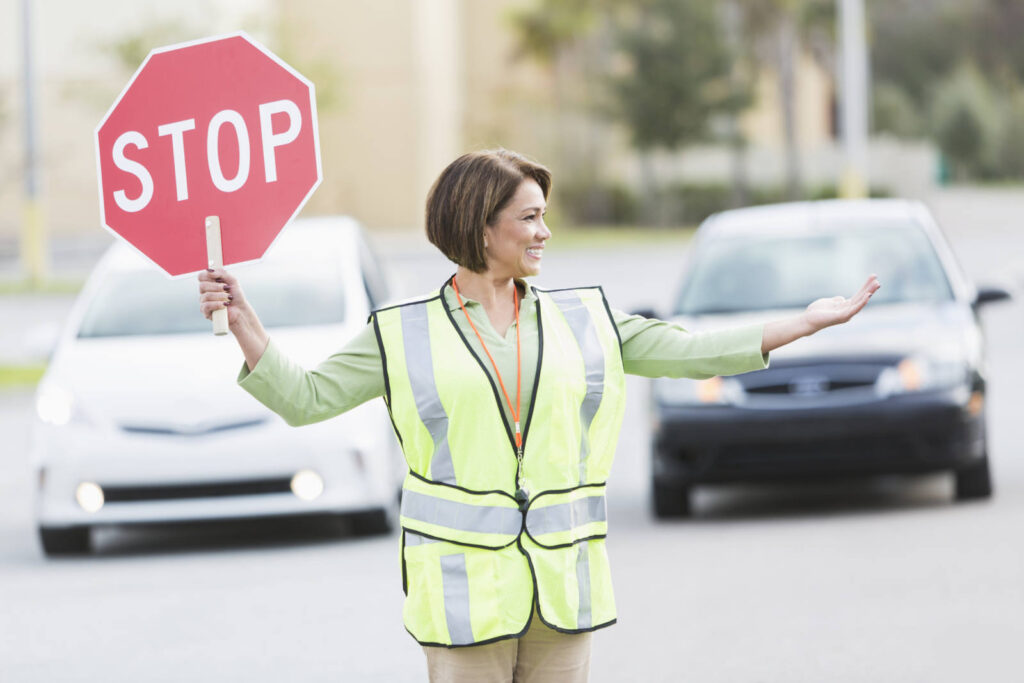
Pedestrians share the road with vehicles, making it crucial to establish safe crossing points and protocols. Crossing guards play a vital role in this endeavor, acting as guardians of pedestrian safety at busy intersections and school zones. While their authority may not extend to issuing tickets or making arrests, their presence significantly impacts traffic flow and encourages responsible driving behavior. This article delves into the importance of crossing guards, their responsibilities, and how they contribute to a safer environment for pedestrians.
Pedestrian Safety
Pedestrian safety is paramount in any community. Unfortunately, accidents involving pedestrians can have severe consequences, leading to injuries or even fatalities. Vulnerable road users like children, elderly individuals, and those with disabilities are particularly susceptible to harm. Crossing guards help mitigate these risks by providing a visible presence at high-traffic areas, guiding pedestrians safely across the road, and reminding drivers to exercise caution.
Crossing Guard Responsibilities
Crossing guards have a multifaceted role in ensuring pedestrian safety. Their primary responsibility is to direct traffic and ensure that vehicles stop for pedestrians at designated crosswalks. They also assist pedestrians with crossing the street, especially children and individuals who may require additional assistance. Furthermore, crossing guards often act as educators, reminding drivers about pedestrian rights and promoting safe driving practices.
Training and Certification
Crossing guards typically undergo training programs to equip them with the necessary skills and knowledge for their role. These programs cover topics such as traffic control procedures, pedestrian safety guidelines, first aid, and communication techniques. Many jurisdictions require crossing guards to obtain certification or licenses to demonstrate their competence and commitment to public safety.
Traffic Control
Crossing guards play a crucial role in regulating traffic flow at intersections and school zones. By directing vehicles to stop for pedestrians, they create a safe passage for those crossing the street. Their presence also helps to reduce congestion and improve traffic efficiency. Crossing guards often utilize hand signals, stop signs, and other visual aids to communicate with drivers and pedestrians effectively.
Collaboration with Law Enforcement
While crossing guards primarily focus on traffic control and guidance, they may collaborate with law enforcement officials in certain situations. For example, if a driver refuses to yield to a pedestrian or exhibits reckless behavior, the crossing guard may contact local authorities for assistance. This collaboration ensures that appropriate measures are taken to enforce traffic laws and protect public safety.
Importance of Crosswalks
Crosswalks are designated areas where pedestrians have the right-of-way. They provide a safe and structured pathway for pedestrians to cross the street, reducing the risk of accidents. Crossing guards play a vital role in enforcing the rules of the road at crosswalks, ensuring that drivers yield to pedestrians and maintain a safe distance.
Visibility and Signage
Crosswalks are typically marked with painted lines or signage to enhance visibility and alert drivers to pedestrian crossings. Crossing guards further reinforce this message by standing at designated locations, directing traffic, and reminding drivers to be aware of pedestrians.
Driver Awareness
Driver awareness is crucial for preventing accidents involving pedestrians. Drivers should always be attentive to their surroundings, scan for pedestrians before turning or changing lanes, and yield the right-of-way at crosswalks. Crossing guards contribute to driver awareness by serving as a visible reminder of pedestrian presence and promoting responsible driving behavior.
Conclusion
Crossing guards are essential contributors to pedestrian safety, playing a vital role in regulating traffic flow, guiding pedestrians across the road, and promoting driver awareness. While their authority may not extend to law enforcement, their presence significantly impacts traffic safety and creates a more secure environment for pedestrians. By recognizing the importance of crossing guards and supporting their efforts, we can collectively work towards creating safer roads for everyone.
